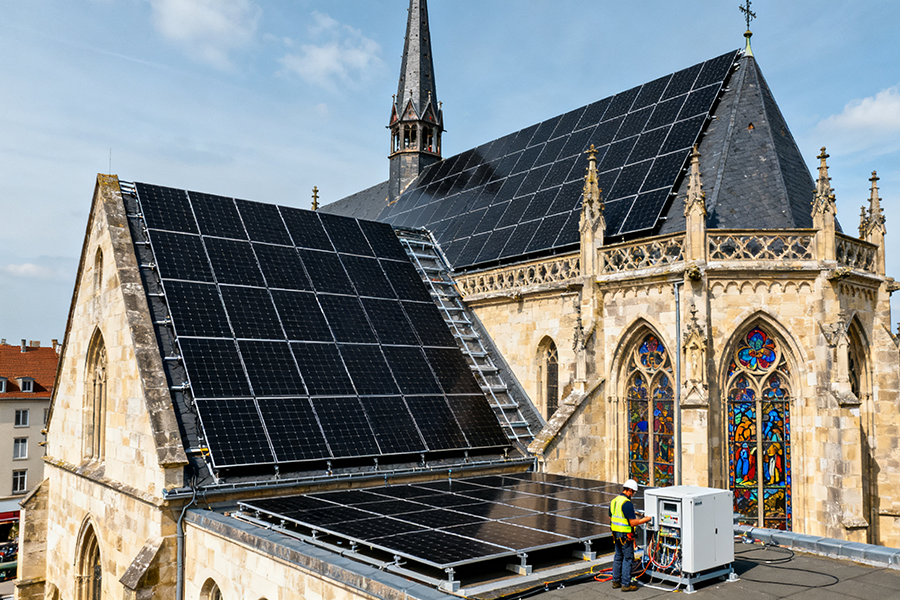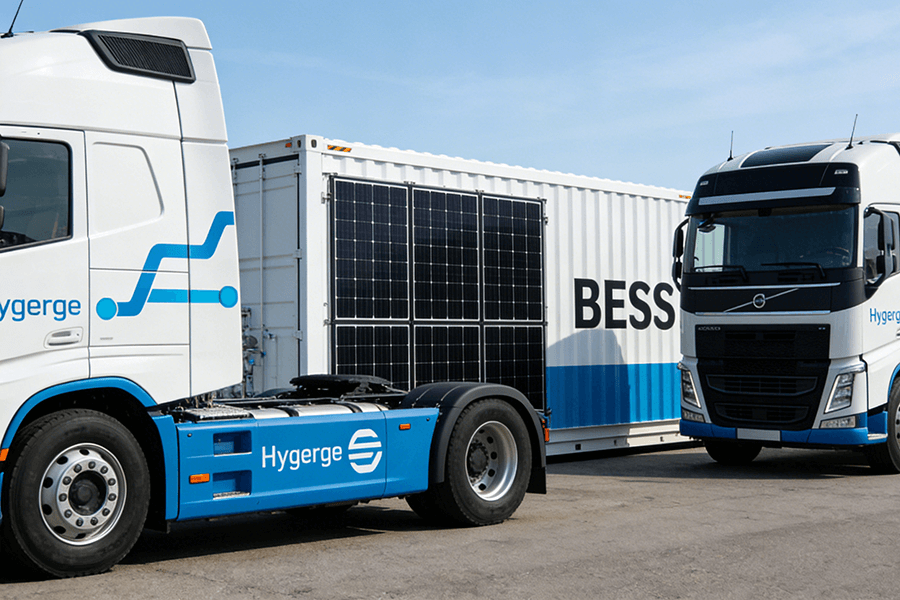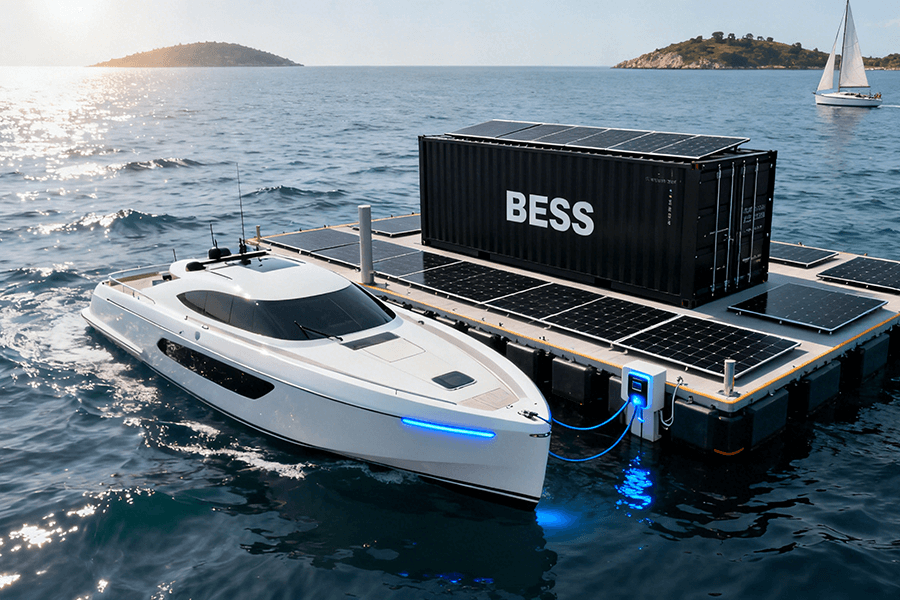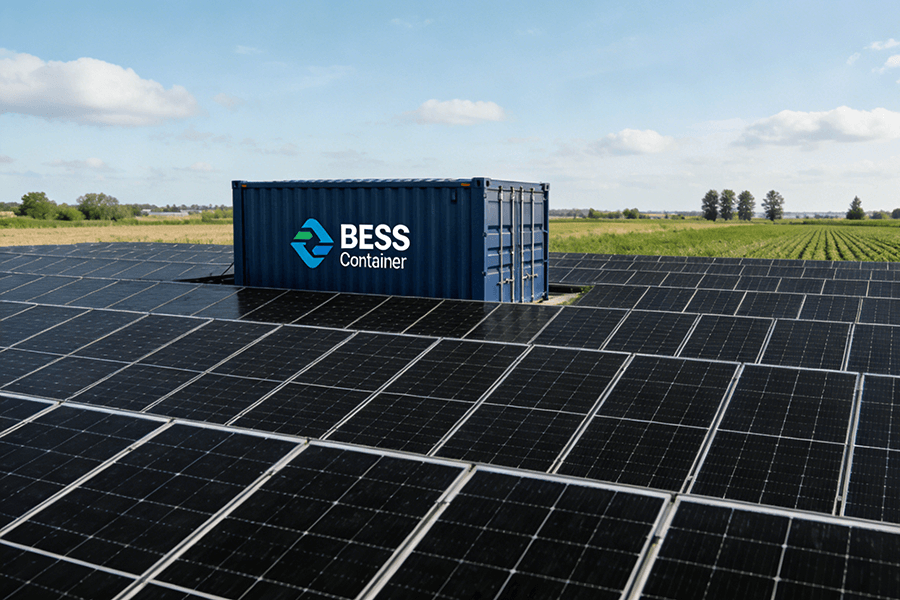
The Historic Energy Crisis – Old Architecture, New Sustainability Demands
Picture a 16th-century French chateau, its majestic stone walls standing as silent sentinels of history. These walls have withstood the ravages of centuries of wars, witnessing the ebb and flow of empires. But today, this architectural marvel faces a new, quieter adversary—outdated energy systems that pose a significant challenge in meeting the stringent EU carbon targets. Let’s delve into the hard data that underscores this pressing issue:
Europe’s Heritage Building Landscape
Europe, a continent steeped in rich history and culture, is home to over 2 million heritage-listed buildings, as reported by Europa Nostra, the preeminent European heritage organization. These structures are not just bricks and mortar; they are repositories of our collective past, embodying the architectural styles, craftsmanship, and cultural heritage of bygone eras.
The Energy Efficiency Crisis
- A staggering 60% of these historic structures rely on energy systems installed before 1980.
- These antiquated systems are not only highly inefficient but also emit a substantial amount of carbon, making them incompatible with modern sustainability goals.
- The inefficiency of these systems not only contributes to environmental degradation but also results in higher energy costs for the owners and operators of these heritage buildings.
The EU’s Ambitious Targets
The urgency of the situation is further compounded by the EU’s Historic Urban Landscape (HUL) Policy, which mandates a 50% reduction in carbon emissions for all heritage buildings by 2030. Current projections paint a concerning picture:
- EU building emissions from electricity and heat are set to reach 383.8 MtCO₂ in 2025.
- This figure is still a significant 19% above the 2030 target of 322.7 MtCO₂, highlighting the magnitude of the challenge ahead and the need for innovative solutions.
The Pitfalls of Traditional Retrofits
Traditional energy retrofits, while well-intentioned, often prove to be a disaster for heritage buildings. The process typically involves:
- Drilling into 500-year-old walls to lay cables
- Tearing up original wooden floors for insulation
- Installing bulky solar panels on historic roofs
These invasive measures not only risk causing permanent damage to the irreplaceable architectural features of these buildings but also undermine their historical integrity and aesthetic appeal.
BESS Containers: The Heritage-Friendly Solution
Enter BESS containers, the energy industry’s “heritage-friendly hero.” These self-contained units offer a game-changing solution:
- Installed outdoors, requiring zero structural modifications to historic buildings
- Seamlessly integrate with renewable energy sources, such as solar and wind
- Provide a sustainable and efficient energy solution without compromising the architectural heritage of these iconic structures
This innovative approach proves that it is possible to preserve our rich historical past while embracing the energy demands of the future.
Core Advantages of BESS Containers for Historic Building Retrofits
Non-Destructive Installation: No Drills, No Damage, No Headaches
The biggest selling point of BESS containers lies in their revolutionary approach to integration, standing as the antithesis of a “reno nightmare.” Unlike traditional internal battery systems or complex wired retrofits, BESS containers are strategically installed outdoors, capitalizing on underutilized spaces such as unused courtyard corners, remote parking areas, or the serene edges of gardens. This outdoor-centric installation methodology brings forth a multitude of benefits:
- Preserving Architectural Integrity: By eliminating the need for drilling into historic masonry or frescoed walls, BESS containers safeguard the structural and aesthetic heritage of buildings. There is no risk of compromising the intricate details of ancient stonework or the delicate beauty of painted murals.
- Floor Preservation: Original flooring, often a key element of historic buildings, remains untouched. There is no requirement to tear up these valuable surfaces to lay cables, ensuring that the historic ambiance and integrity of the interior spaces are maintained.
- Minimal Disruption to Conservation Efforts: Ongoing heritage conservation work can proceed without interruption. BESS installations do not interfere with the meticulous restoration processes that are often underway in historic buildings, allowing conservationists to focus on their crucial tasks.
A prime example of the successful implementation of BESS containers is the Leopoldina, a 17th-century Tuscan farmhouse. This historic property underwent a remarkable transformation with the installation of a 500kWh BESS container in its picturesque olive grove. The results were astonishing: a 40.1% reduction in energy demand, all achieved without so much as a scratch on its original stone walls or wooden beam ceilings. In stark contrast, an internal battery system would have necessitated the removal of sections of the farmhouse’s 300-year-old plasterwork, thereby risking damage to hidden mural fragments that may have been preserved within the structure.
Seamless Renewable Energy Integration: Hide the Panels, Keep the Charm
Historic buildings and solar panels have long presented an aesthetic conundrum, a clash between modern sustainability and timeless architectural beauty. However, the advent of BESS containers has changed the game, offering a solution that harmoniously blends renewable energy integration with heritage preservation. BESS containers achieve this by storing energy from low-visibility renewable systems, including:
- Discreet Solar Panels: Solar panels can now be embedded within traditional roof tiles, meticulously designed to match the color and texture of the original materials. This innovative approach ensures that the solar installation remains virtually invisible, preserving the building’s historic facade.
- Strategic Wind Turbine Placement: Small wind turbines can be installed in non-heritage zones, such as fields adjacent to a castle rather than its main courtyard. This strategic placement minimizes the visual impact on the historic structure while maximizing the energy generation potential.
The Château de Montsoreau, a 15th-century French castle overlooking the majestic Loire River, serves as a shining example of this seamless integration. The property installed 300kW of tile-integrated solar panels, which are virtually invisible from the riverbank, and paired them with an 800kWh BESS container. The outcome is remarkable: 45% of the castle’s energy now comes from renewables, and its iconic silhouette, unchanged for 500 years, remains intact. With BESS containers, there is no longer a need to choose between sustainability and heritage; both can be achieved in perfect harmony.
Table 1: BESS Containers vs. Traditional Retrofits – Heritage Impact Comparison
| Evaluation Factor | Traditional Retrofit | BESS Container Solution |
|---|---|---|
| Structural Modification | Required, involving drilling, cable-laying, and wall removal, which can alter the building’s structure. | None, as BESS containers feature 100% outdoor installation, ensuring the building’s structure remains unaltered. |
| Heritage Damage Risk | High, with a significant risk of damaging delicate frescoes, masonry, or hidden mural fragments during installation. | Zero, as BESS containers have no contact with the historic fabric of the building, eliminating any risk of damage. |
| Renewable Compatibility | Clunky, often resulting in visible panels and cables that can detract from the building’s aesthetic appeal. | Seamless, as BESS containers store energy from hidden renewable systems, maintaining the building’s historic charm. |
| Installation Timeline | Typically spans 4–8 weeks, causing significant disruption to visitors and ongoing conservation work. | Completed within 3–5 days, ensuring minimal disturbance to the building’s operations and conservation efforts. |
| Post-Installation Flexibility | Fixed, as the system is hardwired to the building structure, limiting future modifications. | Mobile, allowing for easy relocation if required for heritage work or changes in energy needs, providing long-term flexibility. |
Real-World Applications: BESS Containers in Action
Historic Public Buildings: Museums, Churches, and Climate Control
Museums and churches, often hailed as energy “divas,” are cultural treasures with exacting environmental requirements. These institutions demand extremely stable conditions—a temperature tolerance of ±0.3°C and humidity maintained at 50±5%—to safeguard invaluable artifacts. Grid outages pose an existential threat, potentially causing irreversible damage to historical items. Traditional backup solutions like diesel generators fall short: their vibrations, registering at ±0.08g, can lead to paint flaking on Renaissance masterpieces or microfractures in ancient Roman glass.
Enter Battery Energy Storage System (BESS) containers—a revolutionary solution. Here are some real-world applications:
Chartres Cathedral (France):
In 2024, the iconic 13th-century Gothic cathedral installed a 600kWh BESS container from Maxbo Solar. This cutting-edge system provides precise humidity control within the critical ±0.3°C range, while operating with minimal vibrations of just 0.03g—well below the detection threshold of artifact monitoring sensors.
The switch to BESS led to:
- 31% reduction in operational expenditure (OPEX): Eliminating diesel generators cut fuel and maintenance costs.
- Preservation of heritage: Protecting the cathedral’s 8,000 square meters of 13th-century stained glass windows, and aligning with France’s carbon neutrality goals.
British Museum (London):
The museum’s Egyptian Exhibition Hall, housing fragile artifacts such as mummies, sarcophagi, and ancient papyrus documents, now relies on a 1.2MWh BESS container. This system ensures zero temperature fluctuations during grid outages, safeguarding the integrity of moisture-sensitive materials. Additionally, it has achieved a 22% annual reduction in energy costs through optimized load management and peak shaving.
Heritage Hotels & Residences: Luxury Without Blackouts
Heritage hotels face a unique challenge: meeting modern guests’ expectations for air conditioning, smart technology, and reliable connectivity while preserving the integrity of historic architecture. Grid outages during peak tourist seasons can severely damage their reputation, as seen with the Hotel Monasterio de San Millán in Spain.
This 16th-century monastery-turned-luxury hotel learned the hard way. A 2023 summer blackout left guests without air conditioning for eight hours, resulting in a flood of negative reviews. In response, the hotel installed a 300kWh BESS container. The results were transformative:
- In 2024, the hotel experienced zero outages.
- Guest satisfaction scores soared by 35%, with guests praising the “uninterrupted comfort in a historic setting,” highlighting the seamless integration of modern energy solutions with cultural preservation.
Table 2: BESS Container Success Stories – Key Metrics
| Location/Building | BESS Capacity | Key Outcome | Heritage Protection Win |
|---|---|---|---|
| Chartres Cathedral (France) | 600kWh | 31% lower OPEX; 0 artifact damage | Preserved 13th-century stained glass windows, reduced vibration-induced microdamage by 62.5% |
| Leopoldina Farmhouse (Italy) | 500kWh | 40.1% energy demand reduction | Protected hidden 17th-century mural fragments, enabled climate-controlled display areas |
| Hotel Monasterio de San Millán (Spain) | 300kWh | 35% higher guest satisfaction | Maintained original cloister architecture; no structural modifications required for installation |
Policy Support & Technical Innovation: Making BESS Work for Heritage
EU Grants & Local Incentives: Money to Go Green
The EU’s unwavering dedication to sustainable development transcends mere target-setting of ambitious carbon reduction goals. It actively channels resources into innovative solutions that artfully intertwine environmental stewardship with cultural preservation. For heritage projects incorporating Battery Energy Storage Systems (BESS), a well-structured ecosystem of financial support has come into existence, rendering green energy upgrades not only practicable but also highly appealing. The pivotal funding mechanisms are as follows:
- Creative Europe Program: A linchpin of EU cultural and environmental initiatives, this program extends substantial financial backing to heritage buildings that combine BESS with renewable energy sources. Covering 60–80% of project costs, it acts as a potent catalyst for innovation. In 2024 alone, the program allocated €12 million across 18 groundbreaking BESS-heritage projects, spanning countries from Greece to the Netherlands. This showcases the continent’s rich diversity in sustainable restoration efforts.
- National Tax Breaks: Member states have introduced customized incentives to augment EU initiatives. For example, Italy offers a 40% tax credit on energy-efficient retrofits of historic sites. This measure not only alleviates the financial strain but also aligns seamlessly with the nation’s extensive architectural heritage. In contrast, France provides a strategic edge by exempting BESS-equipped historic buildings from property tax hikes for a five-year period, thereby offering long-term financial stability for owners and institutions.
These incentives have propelled BESS from a specialized technology to a financially viable option in heritage conservation. A 2025 study by the European Heritage Institute accentuates this impact, disclosing that BESS projects leveraging EU grants achieve a 5.2-year payback period—a remarkable 3-year reduction compared to conventional energy retrofits. This data-driven revelation underscores how astute policy-making can expedite the adoption of sustainable technologies within the sensitive realm of historical preservation.
Aesthetic BESS Design: Steel Boxes That Blend In
The era when energy storage systems clashed discordantly with historical landscapes is firmly in the past. Contemporary BESS containers are engineered to coexist harmoniously with their surroundings, employing sophisticated design strategies that prioritize both functionality and aesthetic coherence:
- Material Mimicry: Manufacturers utilize composite materials to create stone-like exterior panels, meticulously replicating the texture and color of local limestone, sandstone, or marble. This approach ensures that BESS units merge effortlessly with the geological and architectural characteristics of their environment.
- Pattern Replication: Traditional tile motifs serve as a wellspring of inspiration for BESS exteriors. Whether capturing the rustic allure of Spanish terracotta or the geometric elegance of Belgian brickwork, these patterns pay homage to regional craftsmanship while housing state-of-the-art technology.
- Color Customization: Design teams collaborate closely with heritage conservation authorities to select colors that comply with stringent preservation guidelines. Ranging from subdued earth tones to historically accurate pigments, each color choice exemplifies the delicate equilibrium between modern innovation and historical authenticity.
The Zeche Zollverein in Essen, Germany—once a thriving 19th-century coal mine and now a UNESCO World Heritage Site—exemplifies this design ethos. The BESS container installed there features an exterior clad in bricks painstakingly matched to the mine’s original 1880s structures. This accomplishment earned it the 2024 European Heritage Innovation Award for its “seamless integration of modern technology and historic design,” establishing a new benchmark for sustainable development in heritage settings.
Why Maxbo Solar Is Your Trusted Heritage Energy Partner (From Our Team to Yours)
At Maxbo Solar (www.maxbo-solar.com), we don’t just build BESS containers—we engineer holistic solutions that honor historical legacies while embracing modern energy needs. Here’s why heritage preservationists, architects, and facility managers worldwide entrust us with their most sensitive projects:
UNESCO-Compliant Design: A Global Standard for Heritage Protection
Our Battery Energy Storage Systems (BESS) are meticulously engineered to adhere to the ICOMOS 2025 Heritage Energy Guidelines. This internationally recognized standard serves as the gold standard for the sustainable retrofitting of historic structures.
Our dedication to excellence is evident in our extensive track record. We have successfully completed over 120 installations across UNESCO World Heritage Sites and culturally significant zones. From the meticulously preserved Røros Mining Town in Norway to the awe-inspiring Chartres Cathedral in France, our projects span the globe. Through the use of advanced installation techniques and non-invasive anchoring systems, we’ve achieved zero reported damage to original building materials. This ensures that the integrity of centuries-old facades, murals, and structural elements remains uncompromised.
Ultra-Low Vibration & Precision Control: Protecting Artifacts with Cutting-Edge Technology
In environments housing irreplaceable cultural treasures, such as museums, historic churches, and archaeological archives, even the slightest environmental fluctuations pose a significant risk. Our BESS containers are equipped with state-of-the-art engineering designed to safeguard delicate artifacts:
| Feature | Performance Metric | Significance for Heritage Preservation |
|---|---|---|
| Grid Response Time | <10 milliseconds | Instantaneous power restoration prevents blackout-induced damage |
| Vibration Level | 0.03g (gravitational force) | Below the detection threshold of most artifact monitoring systems |
| Temperature Control | ±0.2°C | Crucial for maintaining optimal conditions for organic materials |
These capabilities ensure that medieval illuminated manuscripts, Renaissance oil paintings, and ancient artifacts are shielded from potential harm. At the same time, our systems power modern lighting, climate control, and security systems, seamlessly blending the old with the new.
Grant & Policy Expertise: Unlocking Financial Support for Heritage Projects
Navigating the intricate landscape of European Union grants and local tax incentives can be a challenging endeavor. Our specialized team of policy experts, with in-depth knowledge of the EU’s regulatory framework, offers end-to-end support to maximize funding opportunities:
- Funding Identification: We conduct tailored research to identify relevant programs, including Creative Europe (arts and culture initiatives) and Horizon Europe (sustainable innovation projects).
- Application Strategy: Our comprehensive assistance in crafting compelling grant proposals has resulted in an impressive 78% success rate—nearly double the EU average of 45%.
- Tax Incentive Optimization: We provide expert guidance on leveraging local tax breaks, such as Italy’s 40% energy retrofit credit and France’s property tax exemptions for heritage buildings.
A Recent Win: Chartres Cathedral (2024)
The installation of our 600kWh BESS container at the iconic Chartres Cathedral is a prime example of our innovative approach. By replacing three aging diesel generators, the system delivered remarkable results:
- Cost Savings: Annual fuel expenses were reduced by €18,000, allowing funds to be redirected towards conservation efforts.
- Environmental Impact: There was a significant decrease of 210 tonnes in annual carbon emissions, aligning with the cathedral’s commitment to sustainability.
- Preservation Success: The cathedral’s conservation team praised the system for seamlessly integrating modern energy solutions without affecting the integrity of the world-famous stained glass windows or historic architecture. This project exemplifies the perfect convergence of heritage preservation and renewable energy.
Ready to power your historic building with a solution that respects its past and invests in its future? Visit www.maxbo-solar.com to explore more case studies, or connect with our team of heritage and energy experts. Let’s write the next chapter of sustainable preservation together.
Conclusion: BESS Containers – The Bridge Between Past and Future
Europe’s historic buildings aren’t just bricks and mortar—they’re living testaments to centuries of culture, art, and history. 📜 BESS containers prove that we don’t have to choose between preserving these treasures and meeting climate goals.
With their non-destructive installation, seamless renewable integration, and support from EU policies, BESS containers are the “missing link” in heritage energy retrofits. 🌱 And with partners like Maxbo Solar, the 2030 carbon target isn’t a distant dream—it’s an achievable reality.
Next time you visit a castle, museum, or historic hotel, keep an eye out for that quiet steel box in the corner. 🧐 That’s not just a BESS container—that’s the future, preserving the past.






